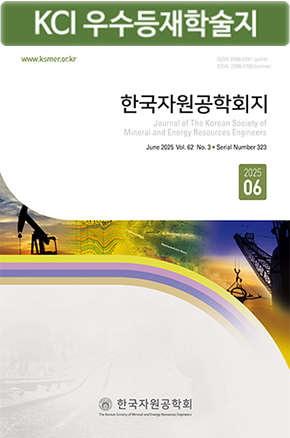Research Paper
Abstract
References
Information
Alaudah, 2019b, Facies_classification_benchmark, 2019.11.28, https://github.com/yalaudah/fa cies_classification_benchmark.
- Publisher :The Korean Society of Mineral and Energy Resources Engineers
- Publisher(Ko) :한국자원공학회
- Journal Title :Journal of the Korean Society of Mineral and Energy Resources Engineers
- Journal Title(Ko) :한국자원공학회지
- Volume : 57
- No :6
- Pages :541-553
- Received Date : 2020-09-22
- Revised Date : 2020-11-20
- Accepted Date : 2020-12-22
- DOI :https://doi.org/10.32390/ksmer.2020.57.6.541



 Journal of the Korean Society of Mineral and Energy Resources Engineers
Journal of the Korean Society of Mineral and Energy Resources Engineers








